#Machiko Hasegawa
Explore tagged Tumblr posts
Text




Machiko Hasegawa From the picture books "Zo no omawari-san (Elephant policeman)", "Buta no sensei (Pig teacher)" and "Fuyu no oyama (Winter mountain)" published in 1951.
長谷川町子 昭和26年発行の絵本「ぞうのおまわりさん」「ぶたのせんせい」「ふゆのおやま」より
34 notes
·
View notes
Text

Machiko Hasegawa/長谷川町子 (1920-1992). one of the first manga artists who started her own comic strip in 1946
3 notes
·
View notes
Text
The New York Times Focuses On The Iconic Voice-Work of Midori Kato
The New York Times Focuses On The Iconic Voice-Work of Midori Kato and the Sazae-San TV Anime #anime #manga #サザエさん #SazaeSan #animation
A new article from the New York Times The Global Profile section, focuses on one of the most iconic voice actors in the anime industry today, who was recently honored in November with another Guinness World Record for the longest career as a voice actor for the same character in an animated TV series, and the series itself earning another record for being the longest running animated TV series.…
#Animation#Anime#Asahi Shimbun#サザエさん#Fuji TV#Fukunichi Shinbun#Japanese Culture#Machiko Hasegawa#Manga#Midori Kato#New York Times#Sazae-San#Seiyuu#Slice of Life#Voice Actors#yonkoma
0 notes
Text



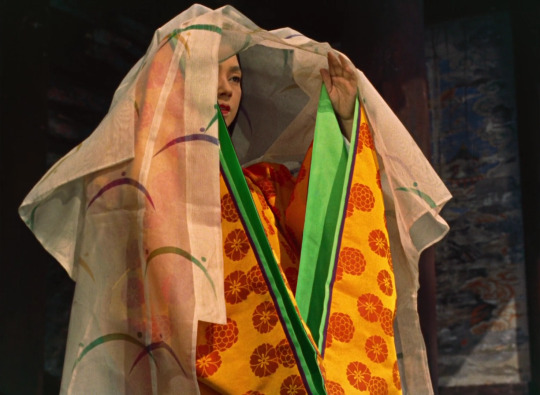
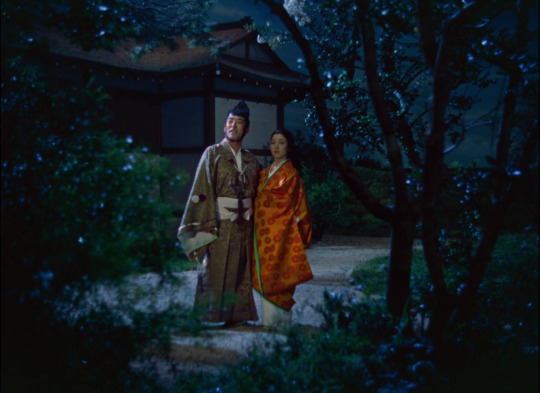
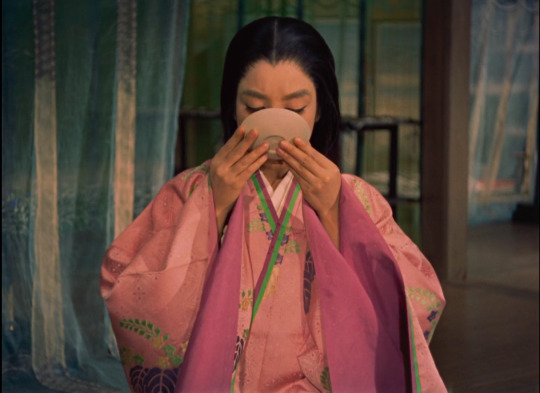
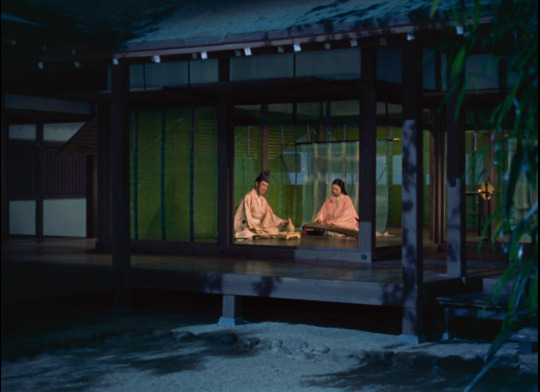


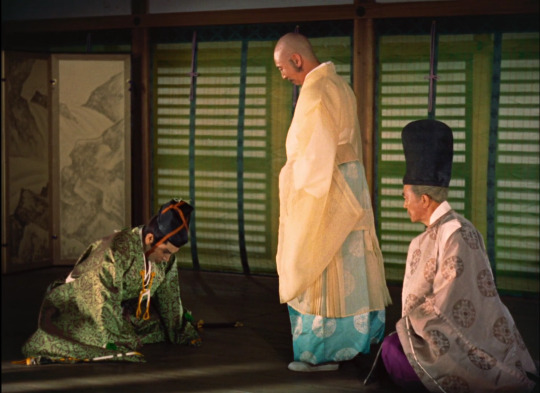

gate of hell (1953) dir. teinosuke kinugasa
#gate of hell#teinosuke kinugasa#kazuo hasegawa#machiko kyo#isao yamagata#film#movie log#upl#GOD... COLOURS OF ALL TIME...
163 notes
·
View notes
Photo
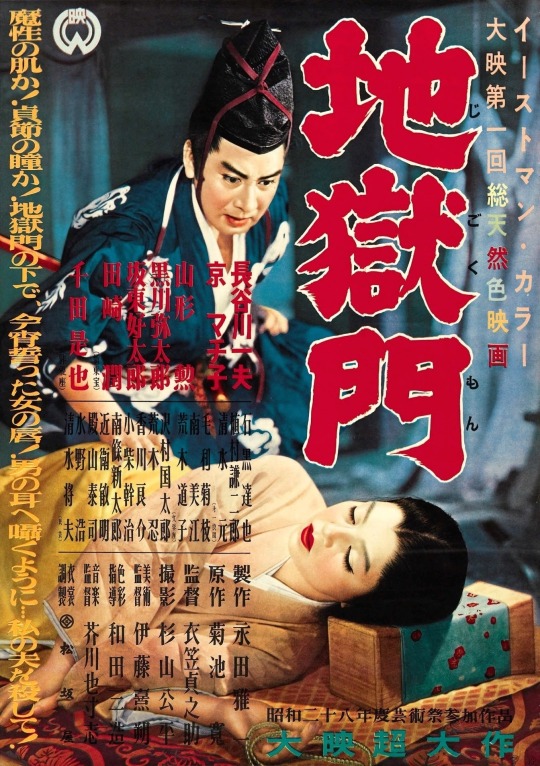

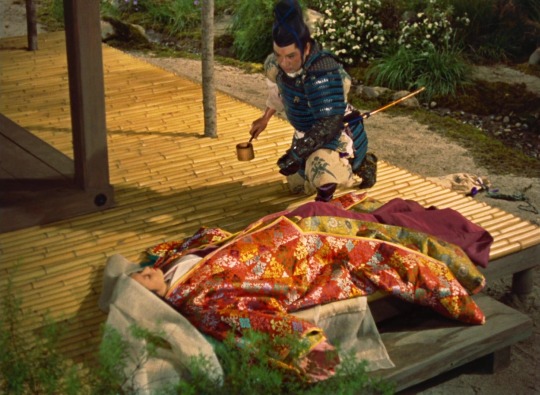
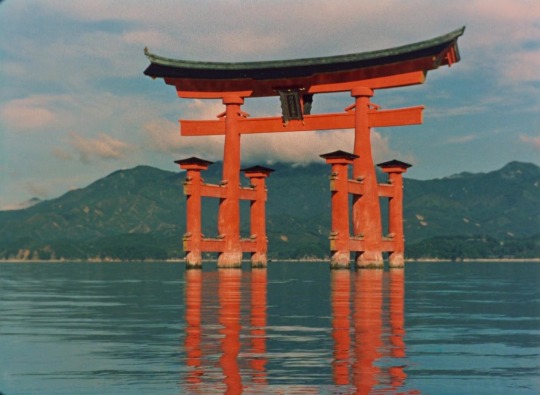
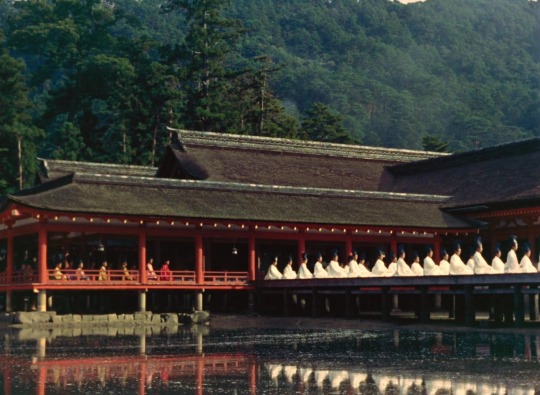


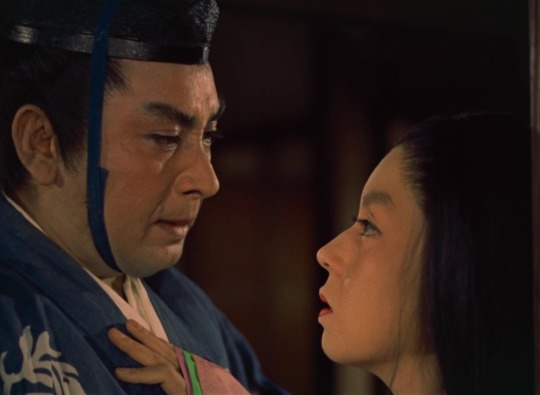

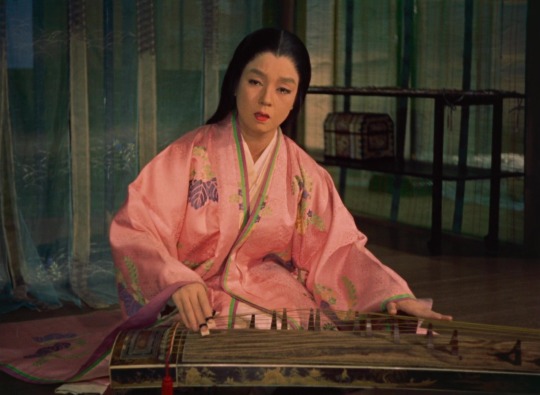
Gate of Hell / Jigokumon (1953, Teinosuke Kinugasa)
地獄門 (衣笠貞之助)
5/22/23
#Gate of Hell#Teinosuke Kinugasa#Machiko Kyo#Kazuo Hasegawa#Isao Yamagata#Yataro Kurokawa#Kotaro Bando#Jun Tazaki#Koreya Senda#Japanese#50s#Japanese Golden Age#color#eastman color#period#jidaigeki#Heian#Kyoto#court#forbidden love#coup#sacrifice#murder#obsession#medieval#chanbara#love triangle#tragedy#stage adaptation#oscar winner
22 notes
·
View notes
Text


Kazuo Hasegawa and Machiko Kyō in Gate of Hell (1953) | 地獄門 - dir. Teinosuke Kinugasa
#kazuo hasegawa#machiko kyō#gate of hell (1953)#jigokumon#1950s#teinosuke kinugasa#classic film#japanese cinema#jidaigeki#happy 70th anniversary to this film#imagestills#promotional stills#imageedit#my edits#my post
2 notes
·
View notes
Photo
Machiko Kyō & Kazuo Hasegawa of Teinosuke Kinugasa's Gate of Hell (1953)

46 notes
·
View notes
Text
Obscure Animation Subject #43: Sazae-san
Originally posted on Twitter on April 3, 2023.
So, um… this is actually the longest-running animated series of all time! Don’t believe me, please read.
Based on the 1946-1974 gag manga by Machiko Hasegawa, the show is produced by Eiken (formerly TCJ until 1972) and airs on Fuji TV.
It premiered on the network on October 5, 1969, with a timeslot of Sundays at 6:30 PM, with each episode containing 3 7-minute segments, and it continues airing to this day. The show holds the Guinness World Record for the longest-running animated television series in 2013.
The show is about Sazae, a very liberated woman, with many of the early plotlines revolving around Sazae bossing around her husband, to the consternation of her neighbors, who believed that a man should be the head of his household. Later, Sazae became a feminist.
Not in the modern American style, and was involved in many comical situations regarding her affiliation with her local women's lib group. Despite the topical nature of the series, the core of the stories revolved around a large family dynamic, presented in a lighthearted fashion.
In current culture, the popular Sazae-san anime is frequently viewed as a nostalgic representation of traditional Japanese society, since it represents a simpler time before many of the changes brought by modern technology. Its social themes are evocative of a nostalgic era.
And its a no-brainer that the show lasted this long for how much of a nostalgic feel it has. Usually, the stories are based on the ones in the manga like most anime, but due to the limited number of strips, a new anime-original story is created every few years.
In addition, the unique culture and events in a typical Japanese household, including the four seasons, will always be reflected in the story.
At the start of the anime, it was a slapstick comedy, but within a year it had become more slice-of-life. However, its still comedic.
For this reason, it is often described as a "national anime" in Japan and is regarded as a symbol of "universality" and "permanence". Whenever there is a change, there is always a great deal of media coverage, and the anime retains a strong influence on the public.
In recent years, due to the influence of its unchanging style, it is sometimes criticized as "anachronistic" or "this anime depicts the 20th century," such as the absence of smartphones and convenience stores in the work even though the period setting is the present day.
In response to this comment, the staff said, "The appeal of this anime is that it depicts scenes of everyday life and universal relationships that can be found in any family. Therefore, we have no plans in the future to incorporate events or items that would change them."
However, some of the phenomena, such as smoking and corporal punishment, which have come to be considered inappropriate due to changing times, have been removed or otherwise addressed. The anime is not well known outside of Japan, as it has never been developed globally.
However, in 2019, the producers stated in a conversation that they hope to be able to expand globally in the future. Otherwise, due to wishes and right-holders, most of the show is considered lost media with only a small percentage of episodes have surfaced online.
As of 2023, only Midori Katō, who plays Sazae, has never been changed. Katō was recognized by Guinness World Records in 2019 as the "Longest career as a voice actor for the same character of an animated TV series". Very impressive that she’s been voicing for so long.
The opening is an introduction to the places that Sazae has traveled and visited throughout Japan since 1974. This video changes every three months. This has come to be viewed by cities as a "cost-effective means of promoting tourism" and Sazae is proud of promoting.
From the start of the series until October 1991, Sazae ended each episode by tossing a bean or rice cake in the air and catching it in her mouth. It was replaced after doctors raised concerns that children may try to imitate Sazae and potentially choke on food.
Since November 1991, after the closing credits and the next episode previews, each show has ended with a janken match between Sazae and the viewers at home, in which Sazae holds up a sign representing one of the appropriate hand gestures. This made the closings more fun.
The anime series was originally sponsored solely by Toshiba. Later, in 1998, the program expanded to other sponsors, but the unity between Toshiba and Sazae-san remained strong. So when Toshiba withdrew its sponsorship due to poor management, it was big news.
Sazae-san was the last animated television series to use traditional cel animation, although as of April 2009, the opening credits were digital. The series finally switched to digital ink-and-paint animation in 2015. The opening and ending themes are by Yuko Uno.
There have been two hiatuses: the first, for about a month beginning in February 1975, due to the 1970s energy crisis; the second, for about a month beginning in May 2020, due to COVID-19. Programming during these periods was handled by rebroadcasting past productions.
In Japan, there is a term called "Sazae-san syndrome" (サザエさん症候群, Sazae-san shōkōgun), which refers to a depressed mood on Sunday night after an episode has finished on television, reminding people that the weekend is coming to an end, mainly children who hate school.
Regardless if it has done good or bad, Sazae-san is one most historical and important animated shows ever created, and it developed a cult following internationally. While most episodes are lost, the ones found give us an insight to the show and how popular it’s become in Japan.

2 notes
·
View notes
Text
Reverie
Group name: Reverie
Fandom name: Muses
Number of members: 6
Member introduction: 1. Real Name: Hwang Young-mi Stage Name: Hayoung Nicknames: Princess, Mimi, Primrose Age & Birthdate & Birth place: 19, 14/2/2005, Seoul, Gangnam Positions: Visual, center, FOTG, lead vocalist Personality: Neat, Charming, influential Ethnicity: Korean
2. Real Name: Jeong Sowon Stage name: Eunia Nicknames: Aegi (Baby in korean), Honey, Bunny Age & Birthdate & Birth place: 16, 8/8/2008, France, Toulouse Positions: Sub-vocalist, lead dancer, sub-rapper, visual, Maknae Personality: Overly empathetic, bubbly, thoughtful Ethnicity: Korean and French
3. Real Name: Hasegawa Machiko Stage Name: Kokomi Nicknames: Koko, Chiko, Omi Age & Birthdate & Birth place: 18, 7/5/2006, Japan, Takayama Positions: Lead vocalist, lead rapper, main dancer Personality: Competitive, bouncy, Creative Ethnicity: Japanese
4. Real name: Yoon Mi-young Stage Name: Yi-jeong Nicknames: Yoonie, Mi-so (Beautiful smile in korean) Age & Birthdate & Birth place: 21, 26/7/2003, South Korea, Jeju Island Positions: Main dancer, main rapper, sub-vocalist Personality: Bold, humble, straight-forward Ethnicity: Korean
5. Real Name: Kimura Momoka Stage Name: Yuriko Nicknames: Riko, Momo, Yuri, Ddung-ddung (little bunny in korean) Age & Birthdate & Birth place: 17, 16/12/2007, Australia, Adelaide Positions: Lead dancer, sub-rapper, main vocalist, center Personality: Introverted, Observant, Astute Ethnicity: Japanese Australian
6. Real Name: Nam Hyejin Stage Name: Chemi Nicknames: Emi, Hye, Cherry Age & Birthdate: & Birth place 20, 3/11/2004, South Korea, Sejong Positions: Main Vocalist, sub-rapper, Leader Personality: Well-liked by everyone, inspirational, Altruistic Ethnicity: Korean
Concept: Pink pilates, princess, coquette, royal, dreamy. Their concept is a mix of IVE and ILLIT.
Company and Subsidiary they work under: Company: Harmony Beats Ent. Subsidiary: LUMINANCE Ent.
0 notes
Text
It is said that manga was used to spread propaganda about the benefits of Japanese leadership during the rise of the Japanese imperialism, but all of this would go on to change after the war.
After the world war to Japan found it self under the occupation of the united states. And people from America would go on to bring their own comics and cartoons, this was a very important even in Japan as this would go on to influence a lot of the mangaka to come, some examples of the cartoons and comics they would bring from America are works like from Disney, Mickey Mouse, Betty Boop and Bambi.

And as time when artist in japan would give birth to their own styles, primarily within newspapers and magazines which sought readership, and these would go on to evolved into dedicated weekly and monthly comic magazines which carried a collection of about 10 or 20 series installments per edition
And form this it gave birth to many mangaka in Japan such as the God of Manga and Godfather of Anime, and this artist being known as Osamu Tezuka the creator of the famous Astro Boy as well as Machiko Hasegawa, he was the one who invented the distinctive large eye prominent in both fields.

0 notes
Text

Machiko Hasegawa
長谷川町子
25 notes
·
View notes
Text
Weekend treat: the town where my current favorite manga/anime named "Sazae-san" sets!
28/1/2024
Probably, people who live outside Japan may not be familiar with this manga/anime, but almost all the Japanese do know. "Sazae-san" is called a national anime here in Japan and broadcast on Sunday evenings. I didn't have any interest in it before, yet I realized how amazing it was especially on the aspect of its design, characters, and setting. Recent episodes on TV are relatively profound, as far as I'm concerned.

Mom and I went to Sakura-shimmachi by train for the museums dedicated to works by Machiko Hasegawa, author of "Sazae-san", and the art exhibition featuring Wakame-chan, one of the main characters in it.

By the by, I got amazed at wall design of the station; Its color is pink like a cherry blossom(sakura in Japanese). In fact, the whole town is decorated with pictures of such a flower and characters, which is cute. I felt kind of love from citizens toward their place there.

Going up the stairs, we came across two sets of statue of the Isonos and the Fugutas; Also, there is the artwork made out of flowers. We respectively took pictures with them, which could have appeared to be typical tourists by pedestrians.

0 notes
Text
Shoujo Manga and Cardcaptor Sakura
Girls' manga, also known as shoujo manga, is a genre of Japanese comics specifically targeted at female readers. These mangas encompass a wide range of themes, genres, and styles, often characterized by their focus on emotions, relationships, and character development. Girls' manga offers a diverse array of stories that cater to different tastes, preferences, and age groups.

History
Shoujo manga emerged as a distinct genre in the post-World War II era, with pioneering artists such as Osamu Tezuka and Machiko Hasegawa paving the way for future creators. The genre evolved throughout the 1960s and 1970s, with artists like Moto Hagio, Riyoko Ikeda, and Keiko Takemiya producing groundbreaking works that expanded the thematic and narrative boundaries of girls' manga. Today, girls' manga continues to thrive as a popular and influential genre, with countless titles being published and adapted into anime and live-action formats.
Impact on Popular Culture
Shoujo manga has had a significant impact on popular culture, both in Japan and internationally. Many girls' manga titles have been adapted into successful anime and live-action series, expanding their reach and influence. Moreover, the genre has inspired a global community of fans who are passionate about their favorite stories, characters, and creators.
Shoujo manga has also played a crucial role in promoting gender equality within the manga industry. By offering stories that center around female characters and cater to female readers, the genre has created space for more diverse perspectives and narratives within the world of manga. For example, one of the most representative Shoujo manga is Cardcaptor Sakura.


Cardcaptor Sakura
Cardcaptor Sakura, a beloved classic in the world of manga and anime, has captivated audiences with its enchanting tale of magic, friendship, and love. Created by the manga artist group CLAMP, this magical girl series introduces us to Sakura Kinomoto, a young girl who inadvertently releases a set of magical cards known as Clow Cards, and must retrieve them to prevent disaster from befalling the world.
Story Overview
The story of Magical Cardcaptor Sakura begins when ten-year-old Sakura Kinomoto accidentally releases a set of magical cards known as the Clow Cards from a book she finds in her father's library. These cards were created by the powerful sorcerer Clow Reed and possess various magical powers, ranging from elemental control to manipulation of time and space. Upon their release, the cards scattered throughout the town, causing chaos and mischief.
Realizing the potential danger posed by the unleashed cards, Keroberos, the guardian beast of the Clow Cards, appoints Sakura as the Cardcaptor. With Keroberos's guidance and support, Sakura sets out on a quest to recapture the Clow Cards and prevent them from wreaking havoc on the world. Along the way, she is joined by her best friend Tomoyo Daidouji, who helps her design costumes and records her adventures, and Syaoran Li, a young boy from Hong Kong who is a descendant of Clow Reed and seeks to capture the cards for himself.

Artwork and Style
The artwork of Magical Cardcaptor Sakura is characterized by its soft, delicate, and detailed illustrations that evoke a sense of wonder and enchantment. The character designs are expressive and endearing, perfectly capturing the essence of each character's personality. The magical sequences and action scenes are beautifully rendered, showcasing the power and beauty of the Clow Cards.
The action in Cardcaptor Sakura revolves around the magical battles between Sakura and the escaped Clow Cards. Each card presents a unique challenge, requiring Sakura to strategize and utilize her growing magical abilities to outsmart and capture them. The attacking aspect of the series is thrilling and imaginative, with each battle showcasing a different aspect of Sakura's resourcefulness and magical prowess. The combination of stunning visuals, intricate choreography, and the emotional stakes in each confrontation makes the action in Cardcaptor Sakura a truly mesmerizing experience.

0 notes
Photo

Machiko Hasegawa (1920-1998) was known as Japan's first female professional manga artist. Representative works include "Sazae-san", "Ijiwara-san" and "Apron-aunt". Text and colorized image by Digital Mix Comany of Japan.
167 notes
·
View notes
Text
Histoire(s) du manga moderne

Chers curieux, chères curieuses,
J'ai récemment emprunté Histoire(s) du manga moderne, écrit par Matthieu Pinon et Laurent Lefebvre et publié aux éditions Ynnis. Voici la première partie des informations que j'ai jugées essentielles ! La deuxième partie se trouve ici.









Bonnes curiosités,
Oriane
#livres#manga#matthieu pinon#Laurent Lefebvre#histoire#japon#shigeru sugiura#machiko hasegawa#sazae-san#yoshihiro tatsumi#une vie dans les marges#osamu tezuka#astro#la princesse saphir#mitsuteru yokoyama#tetsujin 28-go#fire!#hideko mizuno#kamen rider#ishinomori#yoshihary tsuge#doraemon#fujiko fujio#jiro taniguchi#gen d'hiroshima#keiji nakazawa#la rose de versailles#kazuo koike
4 notes
·
View notes
Link
34 notes
·
View notes